When a fellow animal writer asked if I wanted to talk with a pet mom about life after her dog was diagnosed with Degenerative Myelopathy, I didn’t hesitate to say yes. It was a chance to get answers to questions that I’m often asked by pet parents who are worried they won’t be able to take care of their pet.
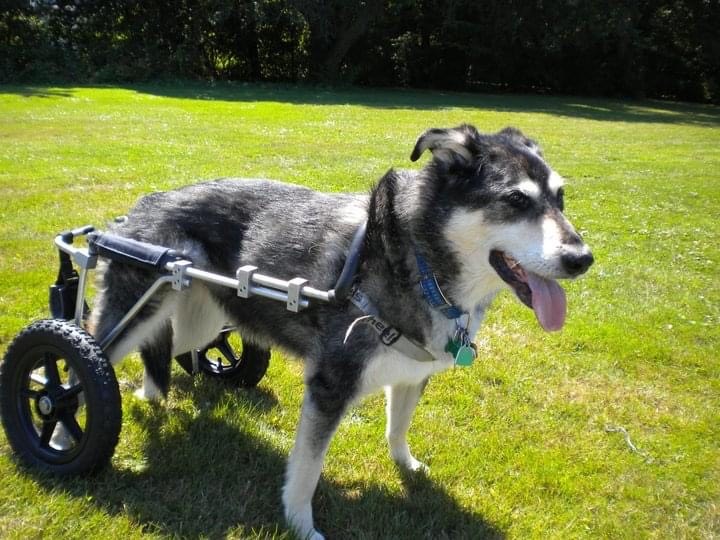
I quickly reached out to introduce myself to pet mom, Sue Torres. Then during our conversation, I learned that Sue is a snowbird who spends her winters just outside of my hometown of Las Vegas. We both realized this was probably the real reason our mutual friend, Lauren, wanted us to meet.
Sue explained that several years ago, her treasured dog Oscar, started to show the early symptoms of Degenerative Myelopathy. In Oscar’s case, the signs started with a slight limp in his hind leg that progressively got worse. Over the next 3 years, Sue and her family dealt with all of the ups and downs of the condition.
The symptoms of DM start with weakness in a dog’s hind legs. Eventually, the rear limbs become paralyzed. The symptoms then move to the front limbs. Dogs become incontinent as the disease progresses and ultimately the DM attacks the respiratory system and other organs.
Dogs typically succumb to DM in 2-3 years. The majority of victims are senior large breed dogs, like German shepherds and Boxers. But DM also strikes Corgi’s and a growing number of other dog breeds.
Oscar’s story, by Sue Torres
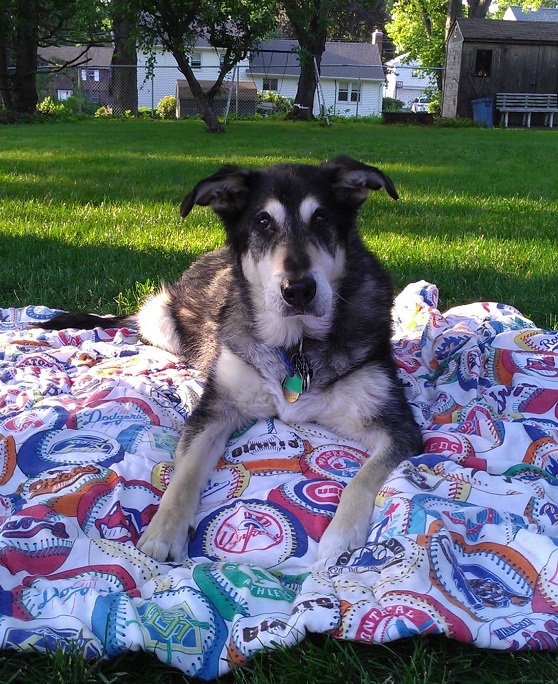
It wasn’t until I was an adult that I got what I had wanted my whole life – my very own dog. In 1981, at the age of 26, I bought my first house, and my first dog Emily came with it. The family was moving and couldn’t take her, so she stayed. Emily was mine for the next sixteen years.
She passed on August 1, 1997. By now I also had a son and a daughter ages 12 and 8. Eleven months to the day after Emily left us, my kids convinced me to stop at the local shelter to “look at the dogs.” A few hours later we were on our way home with Oscar.
Even though I wasn’t really ready for another dog, he made my kids so happy and, in the way, only dogs can Oscar won me over. As far as we could tell he was a shepherd/husky mix and was said to be about eight months old.
For the next thirteen years he was part of our family. He went everywhere with us. He traveled with us on vacations and went to the kids’ sporting events. Other spectators often told us that if Oscar wasn’t there things just somehow didn’t feel right. There wasn’t a single person he met who didn’t love Oscar. One day, when he was about ten or eleven, we noticed he was walking with a slight limp.
Over time it got worse. Our vet thought it was just age-related arthritis, but we knew our dog and we knew it was more than that. It had become clear that he was losing the use of his hind legs. I began doing some research and also changed to a new vet and the consensus was that Oscar had developed Degenerative Myelopathy (DM).

eBook
Find The Right Dog Wheelchair For Your Pet
Your dog has a mobility problem, and you want to buy a wheelchair. But do you know what kind of cart will work best for your dog’s individual needs? After a decade of teaching pet owners how to make the right choice, I put the information into an eBook!
Life with DM
It was like a punch to the gut when I learned that this was a progressive disease and there was no cure. Immediately I began reading everything I could about DM and began adding various vitamins and supplements to his meals.
Although there was a test for DM, we opted not to do it as the result would not have really changed anything. Instead, we began physical therapy with him. He went several times a week for water therapy and we were given exercises to do with him at home, which we did several times a day.
Even with all of that, mobility was becoming more and more difficult for him, so we took him to get fitted for wheels. As hard as it was for us to accept that he was losing the ability to walk on his own, it was even harder for Oscar. He absolutely hated the wheels and refused to walk with them. We kept trying and trying and one day, lo and behold, he just took off and both his life and ours changed for the better.
The wheels gave us two more good years with him until his front legs also started to fail him and he let us know it was okay to let him go.
The final days
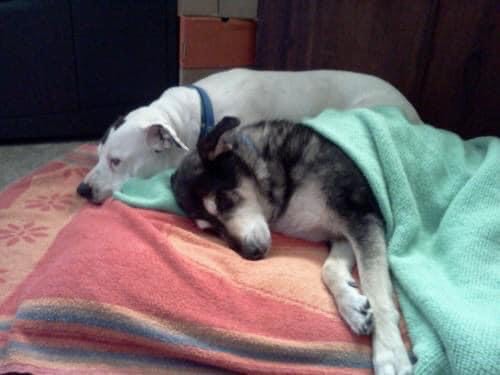
Oscar was truly remarkable. He was friends with everyone, both two-legged and four-legged. In his last few days, he did a farewell tour of the neighborhood in his wheels so everyone could say goodbye to him. There wasn’t anyone he met whose life he didn’t touch.
Caring for a disabled pet is truly a full-time job but for us it was a labor of love. Oscar was family and we would have done anything to make his life the best it could be. Once we knew what we were dealing with there was never a question that we would do whatever it took – after all, this is what we do for those we love. He was brave and smart and we knew without question that he loved us with all his heart. He deserved that same love from us – his family.
Since Oscar we have had and loved other dogs. Our experience with him taught us patience and compassion for all living beings. He taught us to embrace life and to welcome each day with joy and appreciation.
We hope that wherever he is now he knows that we will always remember him with admiration and great love.
Facts about Degenerative Myelopathy
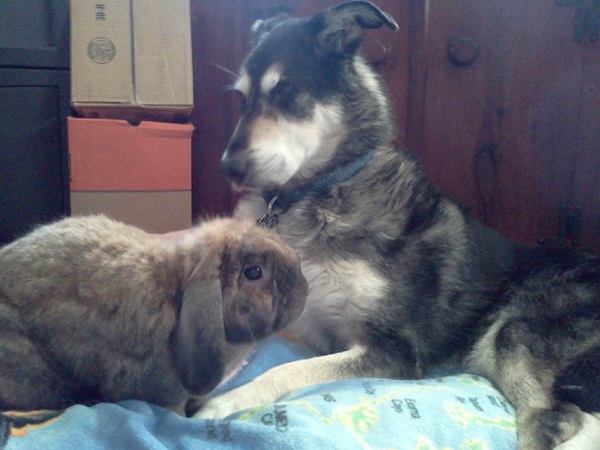
DM is a disease that’s close to my heart, just as it was for Sue and her family. It was the condition my dog Sophie was suspected of having and it’s the reason I started teaching pet owners how to care for a paralyzed dog. It’s the reason I started dogwheelchairlife.com.
Here are a few facts about DM that pet owners should know:
A list of dog breeds prone to Degenerative Myelopathy has also been identified. More breeds are added each year.
Here are the most common dog breeds that develop DM:

Get the Essential Guide
The Essential Guide of Products for Handicapped Dogs e-book is a labor of love for me. I wrote it to answer your most pressing questions about where to find the best products for your wheelchair dog. You’ll find products you didn’t know existed and each will improve your dog’s quality of life. Print a copy and keep it by your side.
Here are the common early symptoms of DM:
- Weakness in the hind limbs that gets progressively worse
- Difficulty getting up from the floor
- Wobbly legs
- Walks by swaying the hips
- Worn down nails
- Knuckles under the back paws
- Dragging the back feet
- Tremors or spasms in the hind leg
- Paralysis of the back legs
Read more:
Learn about research studies at Shade Out DM.







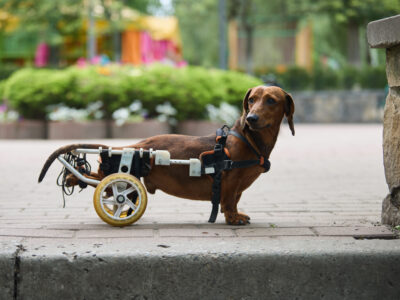


I have a l/XL wheelchair with a new harness and new bolts that I would love to give away (free)– I just don’t want to pay shipping
Alissa, The best place to donate a cart is through Gunnar’s Wheels, but they require you to pay for shipping. The other groups donate new wheelchairs and don’t accept used ones. Otherwise, you might reach out to a local canine rehab facility or a special needs rescue group in your area. I’m sure both would be glad to accept a used cart.